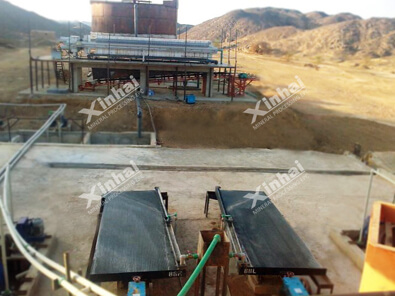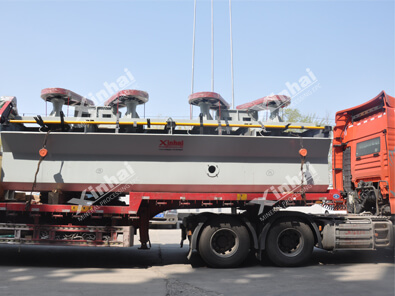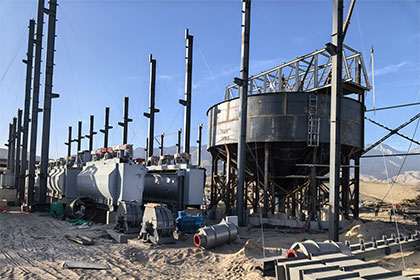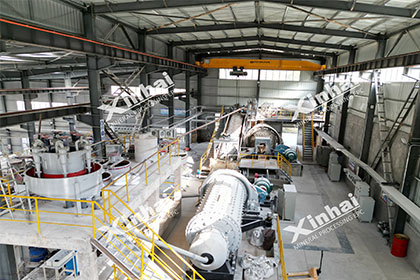Essential Tips in the Nickel Mining Investment Guide for Beginners
 Laura
Laura
 Jul 29, 2024
Jul 29, 2024
 1482
1482
If you want to know more details about equipment, solutions, etc, please click the button below for free consultation, or leave your requirements!
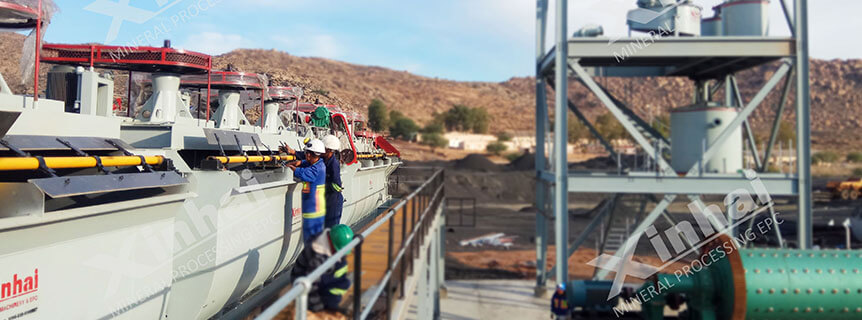
Nickel Mining Investment Guide for Beginners
01Understanding Nickel Mining
BackInvesting in nickel mining can be a lucrative opportunity, especially for beginners. This guide will provide essential tips to help new investors navigate the intricacies of the industry. By understanding the uses of nickel, the global demand, and the key players, one can make an informed decision.
1. What Is Nickel Used For?
Nickel is a critical component in many industries. It is primarily used in the production of stainless steel, which contributes to about 70% of the global demand. Nickel also finds application in batteries for electric vehicles, electronics, and aerospace industries. Its anti-corrosion properties make it ideal for use in gas turbines and chemical plants, ensuring a high demand in various sectors.
Beyond industrial uses, nickel’s significance in the renewable energy sector is growing. It plays a pivotal role in the manufacture of lithium-ion batteries, which are essential for energy storage in solar and wind power systems. As the world moves toward greener energy solutions, the demand for nickel is expected to surge.
Additionally, nickel is used in the minting of coins and in the production of superalloys, which are crucial for high-performance applications such as jet engines and military hardware. These diverse uses make nickel a vital commodity in the global economy.
Nickel's recyclability is another key aspect, as it can be recycled without loss of quality. This trait ensures its continued utility and economic value, emphasizing the importance of understanding the nickel market comprehensively for potential investors.
2. Global Demand for Nickel
The global demand for nickel is on an upward trajectory. The push for electric vehicles (EVs) and renewable energy technologies has significantly contributed to this demand. By 2030, it is estimated that EV batteries alone will account for a significant portion of nickel consumption.
Emerging markets, particularly in Asia, are also driving demand. Countries like China are investing heavily in infrastructure development, which requires a substantial amount of stainless steel. This, in turn, boosts the demand for nickel, making it a valuable investment.
The rise of consumer electronics has further amplified the need for nickel. Smartphones, laptops, and other gadgets rely on nickel-bearing batteries, ensuring a steady demand. Moreover, as global initiatives for reducing carbon emissions take hold, nickel’s role in cleaner technology becomes more pronounced.
Global urbanization trends also underscore the importance of nickel. Developing countries are expanding their urban infrastructures, necessitating extensive use of stainless steel and thereby increasing nickel demand. This sustained demand presents promising opportunities for investors.
3. Key Players in the Nickel Mining Industry
Understanding the key players in the nickel mining industry is crucial for investors. Major companies such as Norilsk Nickel, Vale SA, and BHP hold significant market share and influence on global nickel prices. These companies are known for their large-scale production and strategic operations.
Emerging companies in countries like Indonesia and the Philippines also play a vital role. These regions are rich in nickel deposits and are attracting significant investment due to their favorable mining policies. Keeping an eye on these emerging players is essential for a comprehensive investment strategy.
Partnerships and collaborations among these key players also merit attention. Joint ventures aimed at improving mining technologies and expanding production capacities can impact market dynamics. By staying informed about such developments, investors can better predict market trends.
Moreover, technological innovations driven by these key players shape the industry's future. Advanced mining techniques, resource management, and sustainable practices adopted by leading companies set industry standards and influence investment decisions.
02Assessing Investment Opportunities
BackInvestors must adopt a strategic approach when assessing nickel mining opportunities. Evaluating mining companies, considering geographic factors, and understanding regulatory and environmental aspects are crucial for a well-rounded investment decision.
1. Evaluating Mining Companies
When evaluating mining companies, it is essential to examine their financial health, operational efficiency, and market reputation. Reviewing annual reports and financial statements provides insight into a company’s profitability and stability. Profit margins, revenue growth, and debt levels are critical factors to consider.
Operational efficiency is another key aspect. This includes the company’s ability to manage extraction processes, logistical operations, and resource allocation. Efficient operations lead to lower costs and higher profitability, enhancing the investment’s potential returns.
A company's market reputation and longevity in the industry are also significant indicators. Companies with a robust history and reliable management are likely to navigate market fluctuations better. Researching past performance and industry ratings will offer a clearer picture of a company’s reliability.
Moreover, technological adoption and innovation within a company can differentiate a good investment. Companies investing in advanced mining technologies and sustainable practices are better positioned for long-term success. This focus on innovation often translates to improved operational efficiency and environmental responsibility.
2. Geographic Considerations in Nickel Mining
Geographic factors play a significant role in nickel mining investments. Countries rich in nickel reserves, such as Indonesia, Russia, and Canada, are strategic locations for mining operations. The quality and accessibility of ore deposits in these regions influence the cost and efficiency of extraction processes.
Political stability and regulatory frameworks in these regions are also critical. Stable political environments with clear mining regulations reduce operational risks. Investors should favor countries with transparent and investor-friendly policies to safeguard against unexpected disruptions.
Additionally, infrastructure quality impacts the feasibility of mining operations. Regions with developed infrastructure, such as transportation networks and energy supplies, enhance operational efficiency. Accessibility to ports for export and proximity to major markets are further considerations for an optimal investment strategy.
Environmental factors, such as climate and natural hazards, also affect mining operations. Understanding these considerations helps investors assess potential operational risks and devise contingency plans. Comprehensive geographic assessment ensures a clearer picture of an investment’s viability.
3. Regulatory and Environmental Factors
Regulatory and environmental considerations are paramount in the nickel mining industry. Compliance with local and international mining regulations minimizes legal risks and enhances a company’s market reputation. It is essential to stay updated on regulatory changes to foresee potential impacts on operations.
Environmental sustainability is increasingly becoming a critical aspect of nickel mining. Companies adopting eco-friendly mining practices and technologies are more appealing to conscientious investors. This includes measures to reduce carbon footprints, manage waste, and rehabilitate mining sites post-extraction.
Regulatory frameworks related to environmental protection also affect nickel mining investments. Stringent environmental laws can increase operational costs but also ensure sustainable practices. Investors should evaluate a company’s commitment to environmental standards and its ability to adapt to regulatory changes.
Furthermore, community relations and social responsibility initiatives by mining companies are important. Companies that engage positively with local communities and invest in social development projects are likely to face fewer operational disruptions. Assessing these factors provides a holistic view of investment potential.
03Financial Analysis of Nickel Investments
BackA precise financial analysis is vital for successful nickel mining investments. Understanding market trends, price volatility, cost structures, and risk management strategies will guide informed investment decisions and maximize returns.
1. Market Trends and Price Volatility
Market trends and price volatility are significant aspects of nickel investments. Nickel prices are subject to fluctuations based on supply-demand dynamics. Tracking historical price trends and current market sentiments allows investors to identify potential buying or selling opportunities.
Global economic factors, such as industrial growth or recession, also affect nickel prices. Analyzing economic forecasts and industry outlooks will help investors anticipate market movements. Staying updated with news and analysis from reputed sources is vital for effective market monitoring.
Commodity exchanges, such as the London Metal Exchange (LME), offer insights into nickel prices. Engaging with market indices and futures contracts can provide predictive indicators for future price directions. Being proactive in market analysis helps mitigate risks associated with price volatility.
Moreover, geopolitical events, trade policies, and technological advancements influence nickel prices. Understanding these external factors will equip investors with the information necessary to navigate complex market environments. Diversifying knowledge across various influencing factors enhances investment acumen.
2. Cost Structures in Nickel Mining
Understanding the cost structures in nickel mining is essential for evaluating potential investments. Mining costs include exploration, extraction, processing, and transportation expenses. Companies with optimized cost structures and operational efficiency are likely to be more profitable.
The cost of energy and labor are significant inputs in mining. Regions with lower energy costs and abundant skilled labor can offer cost advantages. Analyzing operational metrics, such as cost per ton of nickel produced, provides insights into a company's competitiveness.
Capital expenditure on equipment and technology also impacts cost structures. Companies investing in advanced machinery and automation typically experience reduced operational costs in the long run. Assessing a company's investment in technological upgrades can reveal its potential for cost-saving.
Additionally, currency exchange rates influence operational costs, particularly for companies with multi-national operations. Monitoring exchange rate trends and their potential effects on cost structures is crucial for global investments in nickel mining. A comprehensive cost analysis assists in identifying financially viable investment opportunities.
3. Risk Management Strategies
Effective risk management strategies are indispensable for nickel mining investors. Market risks, operational risks, and regulatory risks can all impact investment outcomes. Diversifying investments across different geographies and companies can mitigate specific market risks.
Hedging strategies, including futures contracts and options, help manage price volatility. By securing future prices, investors can protect against adverse price movements. It is essential to understand the mechanics of hedging instruments and incorporate them into the investment strategy.
Regular performance monitoring and updating of investment portfolios based on market conditions are necessary. Being agile in adapting to changing market dynamics ensures sustained profitability. Engaging with financial advisors or using advanced investment tools can aid in efficient risk management.
Furthermore, understanding a company's risk management practices, including safety protocols and contingency planning, is crucial. Companies with robust risk management frameworks are better equipped to handle operational disruptions. Assessing a company's risk preparedness adds another layer of security to investments.
04Future Prospects for Nickel Mining
BackNickel mining has a promising future, driven by technological advancements, sustainability concerns, and long-term market forecasts. Staying informed about these prospects will enhance investment strategies and opportunities for growth.
1. Innovations and Technological Advancements
Technological advancements are transforming the nickel mining industry. Innovations in extraction techniques, such as bioleaching and hydrometallurgy, are improving efficiency and reducing environmental impacts. Investing in companies pioneering these technologies can offer substantial returns.
Automation and digitization in mining operations are also significant trends. The use of AI and big data for operational management enhances productivity and resource optimization. Companies embracing these technologies are likely to experience lower costs and higher output.
Battery technology advancements directly impact nickel demand. Research and development in high-nickel battery chemistries are increasing the metal's application in energy storage. Monitoring trends in the EV and renewable energy sectors helps investors align with future market needs.
In addition, advancements in recycling technologies are crucial. Efficient nickel recycling methods ensure a sustainable supply chain and reduced dependency on primary mining. Investing in companies focusing on nickel recycling can be advantageous from both economic and environmental perspectives.
2. Sustainable Practices in Nickel Mining
Sustainable mining practices are becoming a cornerstone of the industry. Environmental responsibility and social governance (ESG) factors are critical for long-term sustainability. Companies adopting eco-friendly practices gain favor with regulators and investors alike.
Reducing carbon emissions through cleaner energy sources and efficient machinery is a priority. Investments in renewable energy for mining operations, such as solar power, demonstrate a commitment to sustainability. Evaluating a company's carbon reduction initiatives is essential for responsible investing.
Water management and waste reduction strategies also play a significant role. Companies employing advanced waste treatment and water recycling methodologies mitigate environmental impacts. Their commitment to conserving natural resources enhances their reputation and operational efficiency.
Community engagement and support are other important aspects. Mining operations that positively impact local communities by providing employment, infrastructure, and social programs are more likely to maintain stable operations. Assessing these social investment strategies adds value to potential investment decisions.
3. Long-Term Market Forecasts
Long-term market forecasts provide insights into the potential future demand and supply of nickel. Analysts predict a substantial increase in nickel consumption driven by the EV sector and infrastructure development. Keeping abreast of these forecasts helps in making informed investment decisions.
Urbanization trends in emerging economies will continue to drive demand for stainless steel. Countries investing in large-scale construction projects will need substantial nickel supplies. Predictive market models based on these trends are valuable for anticipating demand cycles.
Raw material scarcity and geopolitical tensions can influence supply constraints. Understanding these supply-side dynamics is crucial for assessing future market conditions. Engaging with industry reports and expert analyses aids in identifying potential supply disruptions.
Investment in research and development for alternative nickel sources, such as sea-floor nodules, is gaining traction. These initiatives could potentially meet future demand and offer new avenues for investment. Monitoring such innovations aligns investment strategies with future resource management trends.
05Tips for New Investors
BackFor beginners, navigating nickel investments can be complex. Adopting a well-rounded strategy that includes diversification, identifying red flags, and understanding market dynamics ensures informed investment decisions and minimizes risks.
1. Getting Started with Nickel Investments
Starting with nickel investments requires thorough research and a clear strategy. Understanding market fundamentals, such as supply-demand dynamics and price trends, forms the foundation. New investors should start by exploring educational resources and industry reports for insights.
Investing in stocks of established nickel mining companies is a safer entry point. Companies with strong market positions and stable financials provide lower risk compared to speculative investments. New investors should focus on building a diversified portfolio of reliable companies.
Engaging with financial advisors who have expertise in the mining sector can provide valuable guidance. Advisors help in developing investment strategies, risk assessment, and portfolio management tailored to individual goals and risk tolerance. Collaboration with experts minimizes the trial and error phase.
Additionally, starting with a small investment allows beginners to learn and adapt. Monitoring market performance, understanding investment impacts, and gradually increasing investment exposure ensures a balanced approach. Patience and ongoing education are crucial for long-term success.
2. Diversification Strategies
Diversifying investments is essential for managing risks in nickel mining. A well-diversified portfolio encompasses investments in multiple companies, geographies, and related sectors. This approach safeguards against market volatility and company-specific risks.
Geographical diversification involves investing in companies operating in various regions. Understanding regional market conditions and regulatory environments aids in choosing optimal locations. Spreading investments across stable and emerging markets balances growth potential and risk.
Sectoral diversification includes investing in both mining and downstream industries, such as battery manufacturers and stainless steel producers. This approach benefits from the entire value chain of nickel, maximizing potential returns. Investors can capitalize on different stages of the nickel lifecycle.
Regularly reviewing and rebalancing the portfolio based on market conditions is vital. Staying updated with market trends and economic indicators helps in adjusting investments. Diversification combined with proactive management ensures sustainable growth and risk mitigation.
3. Identifying Red Flags in Potential Investments
Identifying red flags is crucial for avoiding poor investments. Financial instability, such as high debt levels or inconsistent revenue, indicates potential risk. Thoroughly reviewing financial statements and conducting credit analyses helps in assessing a company's financial health.
Operational inefficiencies, such as outdated technologies or frequent production downtimes, can negatively impact profitability. Evaluating a company's operational track record and technology adoption offers insights into its efficiency and future prospects.
Negative market reputation or legal issues are significant red flags. Companies involved in regulatory violations, environmental damages, or litigations pose high risks. Researching a company's legal history and industry ratings ensures an informed decision.
Poor management practices, such as lack of transparency or weak governance, are also cautionary signs. Engaging with shareholder reports and market analyses provides information on management quality. Ensuring robust and ethical management practices aligns investments with long-term success.
06In Summary
BackInvesting in nickel mining offers substantial opportunities but also comes with its share of challenges. By understanding market dynamics, evaluating potential investments, and employing solid risk management strategies, you can navigate this complex sector effectively. Stay informed about technological and environmental advancements and lean towards sustainable practices for long-term success.
Contact us and get more details!
 +86 183 3575 8886
+86 183 3575 8886 pinklaurabao@gmail.com
pinklaurabao@gmail.com




 Message
Message Chat Now
Chat Now


